Starlink’s LEO Satellites to Deliver 4G and 5G Mobile from Space

The boss of SpaceX, Elon Musk, has confirmed that their Low Earth Orbit (LEO) based Starlink satellites, which normally deliver ultrafast broadband around the world, will soon also enable 4G and 5G based mobile phones to connect directly with their mega constellation. The pledge.. “No More Cell Phone Dead Zones“.
In listening to Musk’s announcement, you’d be forgiven for thinking that this is a brand-new idea and something that only Starlink is doing. But that is incorrect, although they might well be one of the first to make a mass-market commercial product out of it, which people can actually use.
Satellite phones have of course been around for a long time, but they were designed to work with bespoke communication systems and specific satellites in a high (c.35,000km) Geostationary or Geosynchronous orbit. As a result, they tend to be fairly big, clunky and expensive devices – both in terms of hardware and service cost.
Advertisement
However, in recent years we’ve seen various new research and technologies that have helped to pave the way for a different approach (here), which could make it possible to harness the new generation of ultrafast broadband satellites in a much Lower Earth Orbit (LEO – e.g. 500km) to offer a more affordable 4G (LTE) and 5G mobile service – using common standards – over a wide area.
On top of that, the global 3GPP telecommunications standards’ body recently approved Release 17 of the 5G specification, which adds support for Satellite-driven Non-Terrestrial Networks (NTNs). In theory, all of this could make it possible for handset makers (e.g. Samsung) to produce mobile phones that can communicate just as easily with LEO satellites as they can with a terrestrial mobile mast.
A number of satellite operators, such as the British-registered OneWeb, are already developing such solutions, and Starlink is no exception. The company has now hooked up with T-Mobile in the USA to bring this to market and it’s coming sooner than you think.
What are Starlink and T-Mobile offering?
Under the ‘Coverage Above and Beyond‘ (satellite-to-cellular) solution, both companies are initially planning to offer “text coverage” (i.e. text messaging, including SMS, MMS, and “participating messaging apps“) practically everywhere in the continental US, Hawaii, parts of Alaska, Puerto Rico and territorial waters, even outside the signal of T-Mobile’s network. This will use a small slice of their network capacity across a given coverage area (i.e. “2 to 4 Mbits per cell zone“).
Advertisement
The service will be offered starting with a beta in select areas by the end of 2023, after SpaceX’s planned satellite launches. Afterwards, the companies plan to pursue the addition of voice and data (mobile broadband) connectivity, which will be supported by the second generation (V2) of their Starlink satellites with bigger antenna (5 – 6 metres across). The expectation is that these will be sent into space aboard their huge Starship rocket, provided they can get that working in good time (delays in the space industry are not uncommon).
All of this is expected to operate in familiar mid-band spectrum, which in the world of ‘mobile’ communications usually means anything from around 1GHz to 6GHz (e.g. UK mobile operators use various bands like 2.3GHz, 2.6GHz and 3-4GHz etc.).
SpaceX Statement
This satellite-to-cellular service will provide nearly complete coverage anywhere a customer can see the sky—meaning you can continue texting and eventually make a cell phone call even when you leave terrestrial coverage.
We’ve designed our system so that no modifications are required to the cell phone everyone has in their pocket today, and no new firmware, software updates, or apps are needed. As a complementary technology to terrestrial networks, SpaceX can enable mobile network operators to connect more people, fulfill coverage requirements, and create new business opportunities.
Both Starlink and T-Mobile have also expressed their desire to expand ‘Coverage Above and Beyond’ globally, issuing an open invitation to the world’s carriers to collaborate for truly global connectivity. As part of this, T-Mobile has committed to offer reciprocal roaming to those providers working with them to enable this vision.
However, such a service would still need support from other mobile operators in different countries, as well as the nod from national regulators (i.e. spectrum licences may need to be tweaked and the risk of interference with other users of the band thus has to be examined very carefully). Suffice to say, such things can create disputes and delays, so this approach is not without its challenges.
Advertisement
Similarly, handsets may not require any physical changes to work with the new service, but that doesn’t change the fact that such support may still work better when the manufacturers know how best to optimise their hardware and software. Being able to promote such a benefit to customers as a feature is something that could be quite attractive.
One other question mark in all this is the issue of cost. T-Mobile has hinted that the feature may be included for free on their most popular plans, but others might need to pay a small charge for an add-on. Think of this is being a bit like adding roaming support to your plan, albeit a potentially very powerful form of roaming that could one day deliver almost global coverage. That would solve a lot of annoyances.
Finally, we have to consider the potential for making mobile broadband more accessible to those in remote rural areas. Assuming all goes to plan, then Starlink’s new service could have the capability to replace the use of their expensive dish and router equipment, with end-users instead connecting via their existing handset or mobile routers. But performance may not be as good, so we’ll have to see how that one pans out first.
It’s worth noting the UK mobile operators, such as EE (BT), have helped to develop some of the related technologies behind such systems and are already known to be working with OneWeb on future products.
Mark is a professional technology writer, IT consultant and computer engineer from Dorset (England), he also founded ISPreview in 1999 and enjoys analysing the latest telecoms and broadband developments. Find me on X (Twitter), Mastodon, Facebook, BlueSky, Threads.net and Linkedin.
« Rural UK ISP Gigaclear Offer 400Mbps Broadband for £20 Per Month
BT TV Box Pro Customers in the UK Get Aerial-Free TV Access »








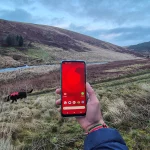
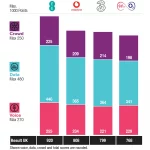

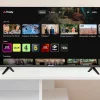
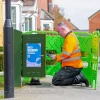

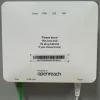








































Given the total failure (so far) of the SRN scheme here in Devon, anything that improves the dire mobile coverage has to be welcomed. Another issue here is network reliability, few of our existing cell sites have power backup or robust backhaul (often both delivered on overhead cables). Great news.
I agree, anything to improve the range and signal strength in Devon.
I live in south Devon and the mobile phone signal is bad and i mean bad. If you look at the suppliers maps they clearly state, yes we provide coverage. The truth is No they don’t.
Not a single one has good coverage in the area.
If you do manage to get any sort of signal the speeds are dire.
A so called 4g area with 3g performance. 5g is only for the big city folk in that there London.
Anything really to improve the digital aspect of the west country.
@Guy Cashmore:
Each satellite delivers up to 4Mbps. Those 4Mbps (best case scenario) need to be shared by everyone covered by that satellite.
So this lets you make normal phone calls and send SMS/MMS in places without land based coverage, but that’s it. It’s not going to improve your speeds or signal indoors. As it stands right now, it’s only for basic communications.
@James McD:
The 4G you get probably relies on band 20 (800Mhz). It travels further, it’s good for indoors, requires less cell towers, but is slower. The 5G you’ll get is likely to also be on a similar band (n28/700Mhz).
It could be faster, but how do you deal with the costs of deploying faster bands/more cell towers? Cities have lots of people per cell… that’s often not the case in rural areas.
How will the phones reach that far away. The satellites are at around 310 miles up. But a quick Google search indicates the furthest a phone signal can travel is around 45 miles.
My logic says that once the signal from the mobile phone clears the main significant atmosphere (~11 miles) it will have very little issue traveling the required distance, however the longer antennas they’re proposing to place on v2 satellites will help the satellites pick up the even faintest signals
Satellites have different rules for signal power etc. and distribute from a direction where that signal is unlikely to encounter as many obstructions. But I’d need to write a full article to explain all this, which I don’t think is strictly necessary for this one.
Thanks for the answers
I would imagine mobiles having folding external antennas like in 90/00’s or external adapters. It will then evolve to internal antennas like it did already.
I believe the 45 mile limit is based on the time taken for the signal to travel from handset to base station and the need to time division multiplex the signals from a number of phones all using the same frequency to a given base station. Some may the close to the base station and therefore have a short delay while others at greater distance a longer delay.
With a satellite solution the time delay from handset to satellite will be similar for all users and therefore can be accounted for.
You wont have the same atmospheric issues in space, but you still have to go through a lot of atmosphere before you reach the satellite and since mobile phone antenna’s are omni directional, there’s little directional transmission/reception gain on the mobile device itself, and the free space path loss at 500km, or more, will be significant.
The easiest solution would be to use High Altitude Platform Stations in the troposphere, or stratosphere, and use them as a relay station to either satellite, or ground stations, that way you wouldn’t need bigger satellites with larger higher gain antenna’s, but you probably wouldn’t need satellites for that solution either. Ships and planes could probably accommodate large enough directional antenna’s to act as relays, and utilse micro cell’s feeding the satellite uplink/downlink equipment. Has Elon thought this one through?
I’m all for this. As someone who takes a satellite phone with them due to working in the middle of nowhere sometimes, the call costs are outrageous. Hopefully this will give the likes of Iridium cause to look at their handset prices and airtime costs. My employer sucks it up for me, but if I want to make any personal calls back to family while i’m working I have to pay for them myself.
Now I like the sound of this – Hoping it will be a lot cheaper than sat phones and will come in handy for places where current network can’t be found or weak signal. But I do question if they are going to impact their RV offerings? I got it just recently so I could have it in my camper because in some parts of Scotland Vodafone is the only carrier and it’s 10-15mbps down – But SL is a solid ish 300 right now. If this works anywhere on the planet it’ll be another game changer.
> But I do question if they are going to impact their RV offerings?
This doesn’t compete with normal Starlink service. As mentioned in the article, the satellite will provide 2-4Mbps for the area it’s covering. That’s up to 4Mbps to be shared by everyone in that area.
This is for emergencies and basic communications (SMS, MMS, normal calls). You won’t be able to watch a YouTube video, for example. T-Mobile mentioned supporting 3rd party apps, but they need to work with them for them to work in a bandwidth sensitive manner. Everything else is blocked.
It’s worth noting, the first SMS was successfully delivered from space, to an unmodified Android phone in 2020.
In February this year the same company (Lynk) connected over 6000 phones, tablets, cars and other IoT devices across the US, Canada, New Zealand, UK and the Bahamas – to a satellite passing overhead – apparently in agreement with 8 of the largest mobile operators.
I assume, basically any device under the signal area that was not currently connected to its home network.
It is pretty exciting, and quite fascinating learning what (and why) they have to do to trick the phone in to connecting to it.
It was stated by musk that were still challenges to overcome.
For him to admit that, leads me to wonder a realistic time frame for this. Let’s be honest musk time is up there with fergie time.
Also, launching the modified V2 vertically in a falcon 9, is going to slow down deployment.
Lets wait and see what actually comes to market